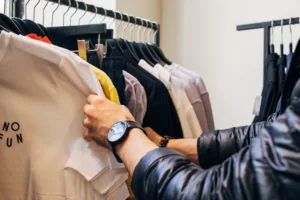Three-fifths of UK consumers are now buying at least some of their groceries online, with 16% of them doing all or most of their shopping digitally, according to research conducted by Spryker and Appinio.
The survey of 2,500 UK consumers found that, despite 60% of people engaging in online grocery shopping at least some of the time, there are still plenty of opportunities for the market to grow further. 80% of consumers say they would do more food shopping online if the experience was improved, while 28% plan to shop mostly online within the next two years. Furthermore, home delivery is heavily favoured (23%) over store pick-up (6.6%).
The research found there were also significant opportunities for online grocery providers in rural locations. Despite there being far fewer online grocery services available in rural areas, 17% of respondents from these locations already do most of their shopping online, proving there to be a demand in these areas too.
“With the cost-of-living crisis shrinking consumer budgets, customers are increasingly looking for the best deals – both online and in-store. According to our research, shoppers at low-cost supermarkets are crying out for online services. These retailers could benefit hugely by offering internet ordering and home delivery,” said Boris Lokschin, Co-founder and CEO of Spryker.
“The UK’s online grocery consumer has high demands, and they’re hungry for new experiences. If providers can deliver on product – with wider variety and higher availability – coupled with an exceptional customer experience, they stand to win these consumers over. One challenge they will face is ensuring existing in-store services remain viable as focus shifts online. To solve this, retailers should invest in technology infrastructure that seamlessly links on- and offline channels to ensure that customers keep coming back, whether in-person or digitally.”
On the brand recognition front, Uber Eats and Just Eat are the most recognised (77%) online grocery providers, just ahead of Deliveroo (74%). On the other hand, despite its considerable investment in the UK grocery market, Amazon is only recognised as a grocery provider by 63% of consumers.
Newer challenger brands have a long way to go to make up the ground on their competitors, with Getir and Gorillas being recognised by 21% and 17% respectively, while the likes of Zapp, GoPuff, Jiffy, and Weezy all fall between 5% and 15%.
One thing that’s worth highlighting is that the rapid growth of online shopping has resulted in 22% of UK shoppers cutting their spending heavily in health food stores, while 19.3% are spending less at local farm shops and open-air markets.
For supermarkets, the impact has been less significant, with just 7% of respondents reporting a noticeable cut in their spending. At low-cost providers such as Aldi and Lidl – which don’t offer online services – 10% of customers are buying markedly less.
“The last three years have seen massive growth in the e-food sector, but there’s still a great deal of untapped potential for retailers to explore,” said Lokschin. “Online grocery shopping in the UK is currently driven by 35–44-year-olds, who spend over a third of their grocery budgets online. However, older consumers are fast becoming online converts – in fact, over 55s are the age group most likely to shop exclusively online. For retailers looking to attract new customers, composable commerce will be central. By choosing best of breed services and integrating them rapidly, providers can create better digital experiences and outpace competitors.”












